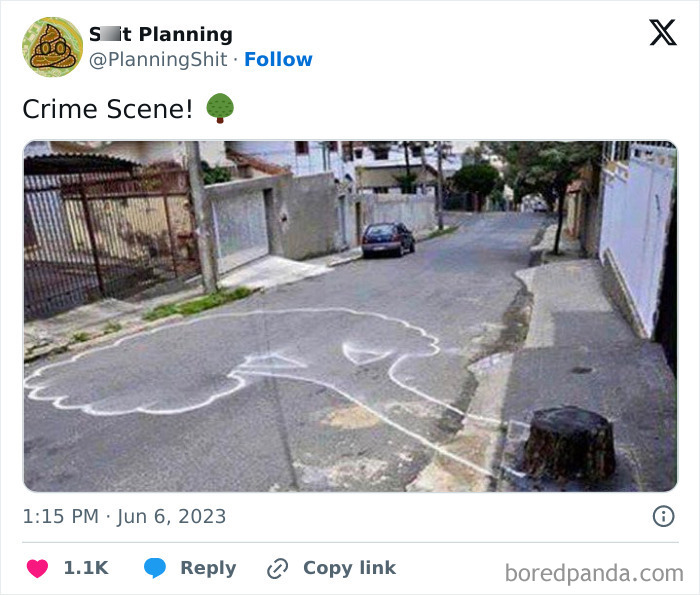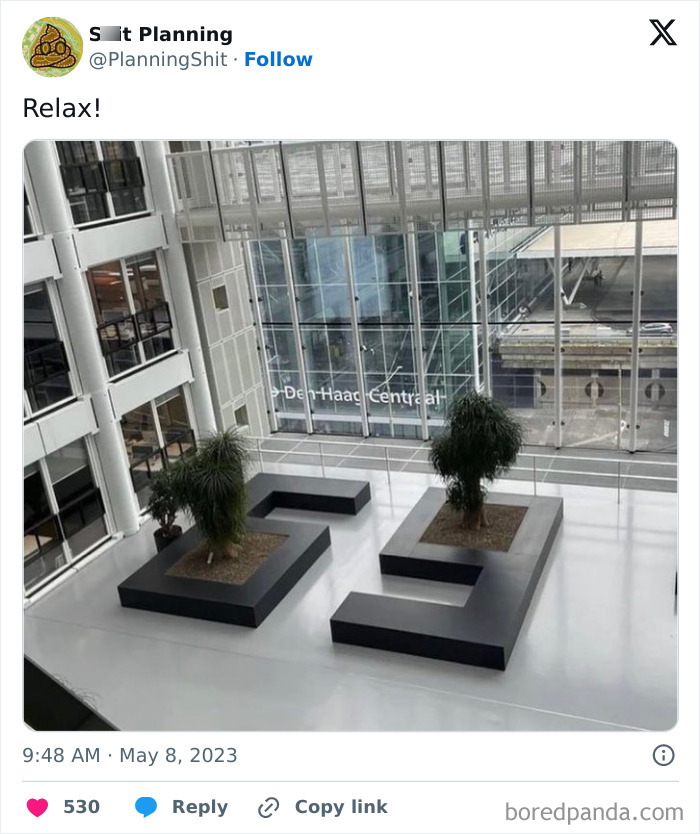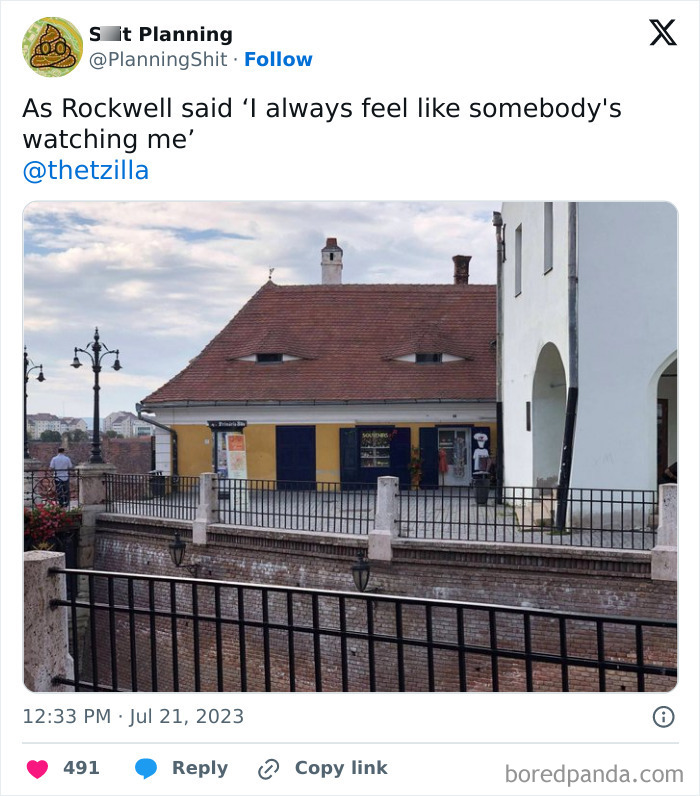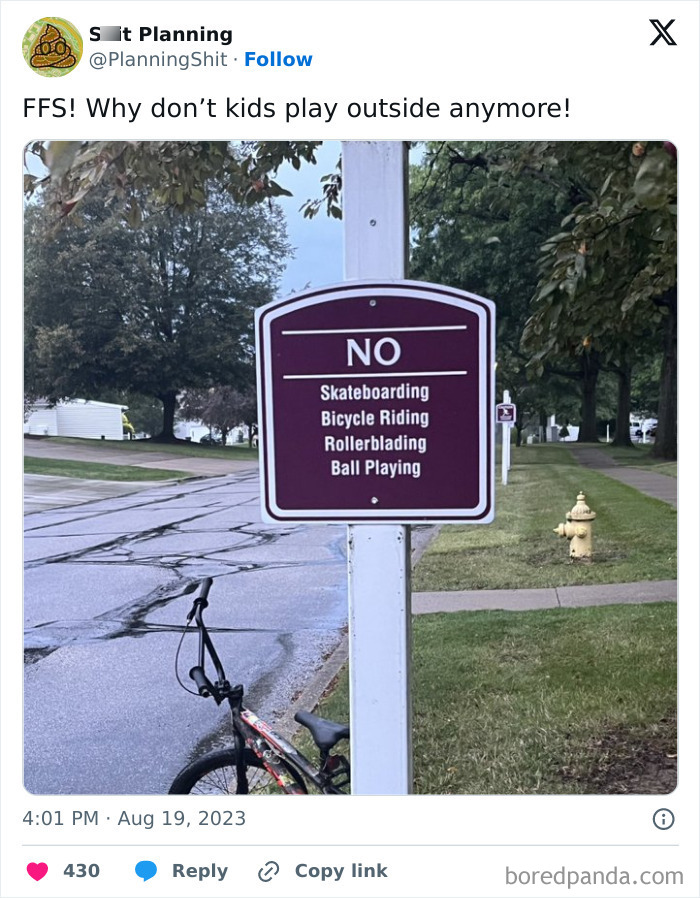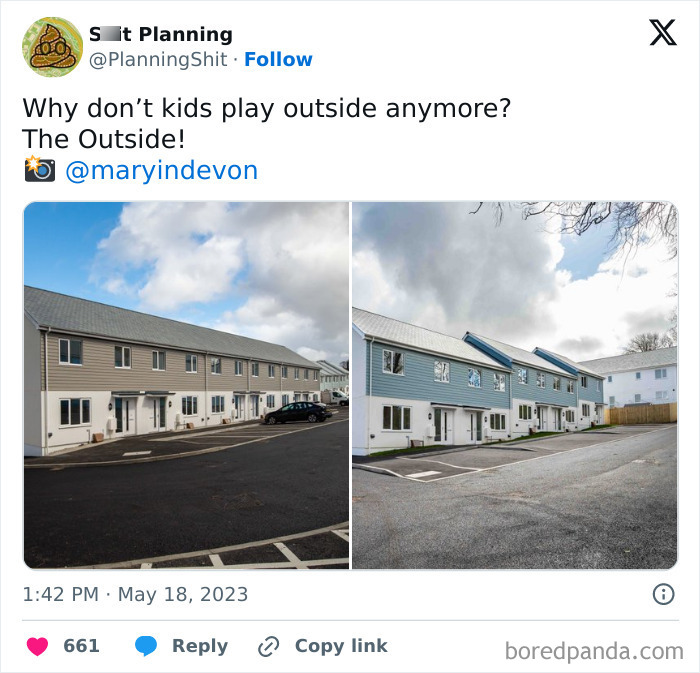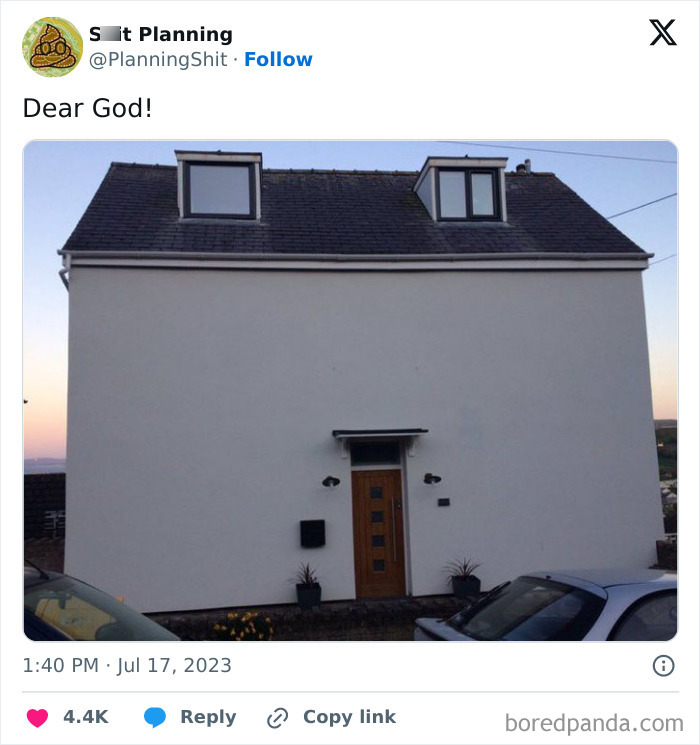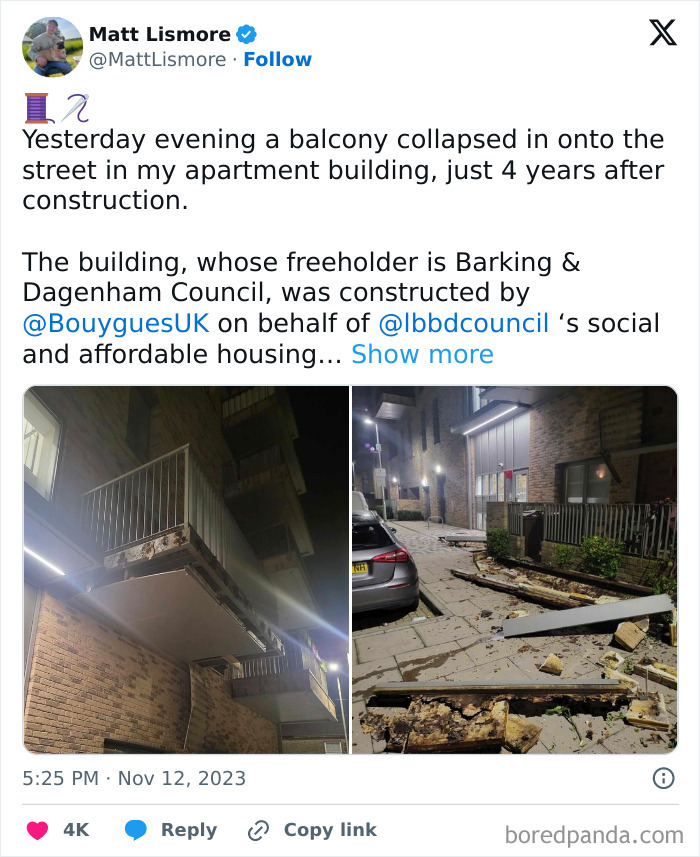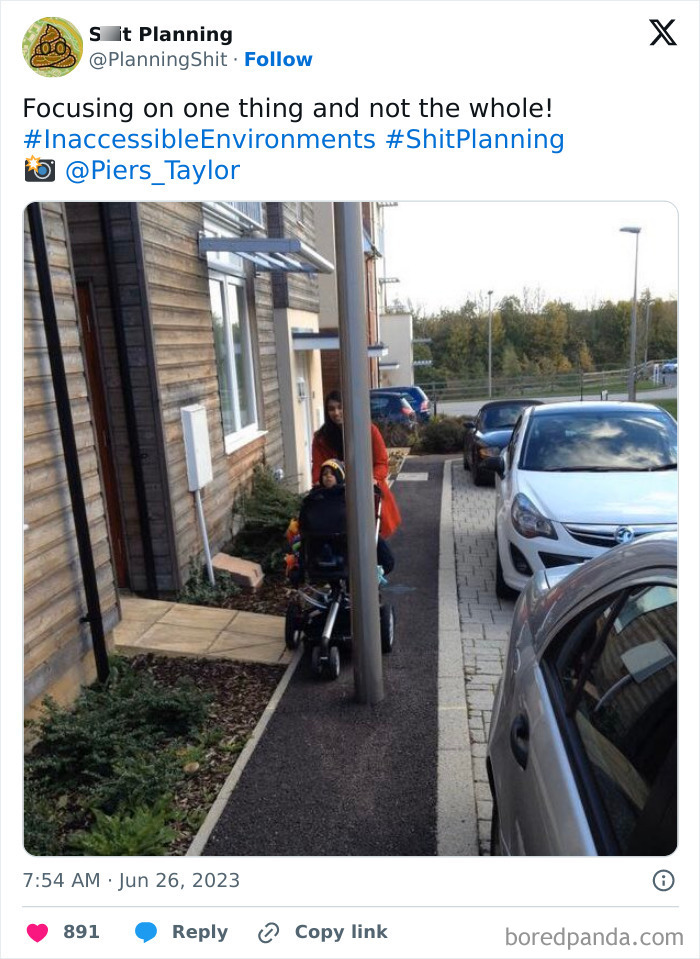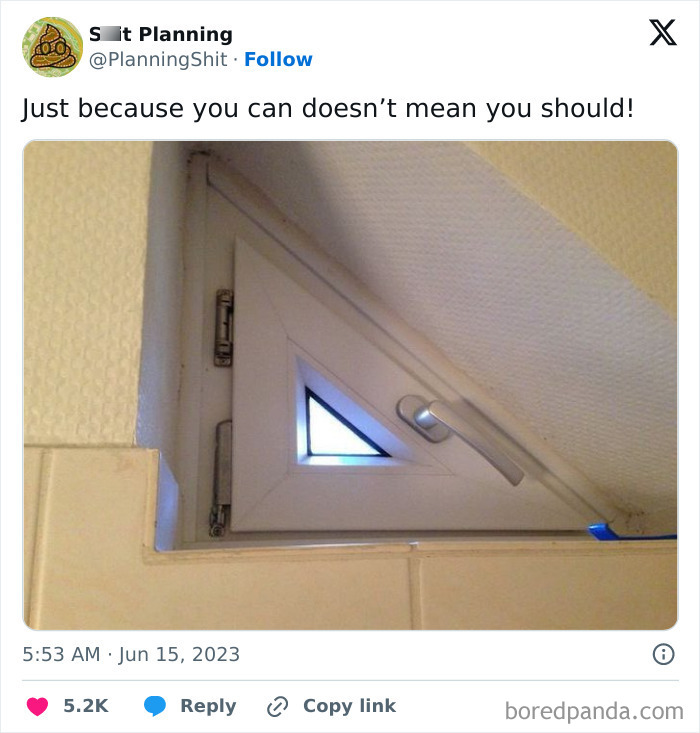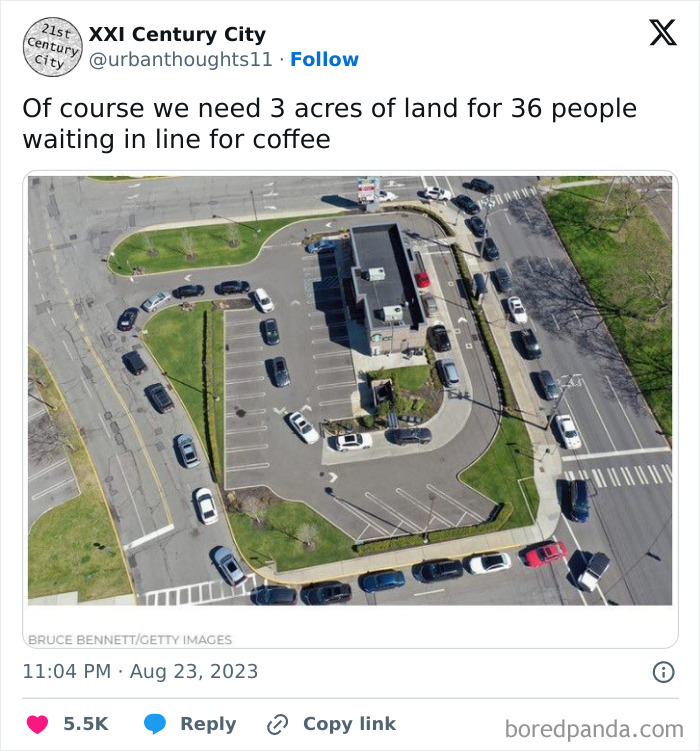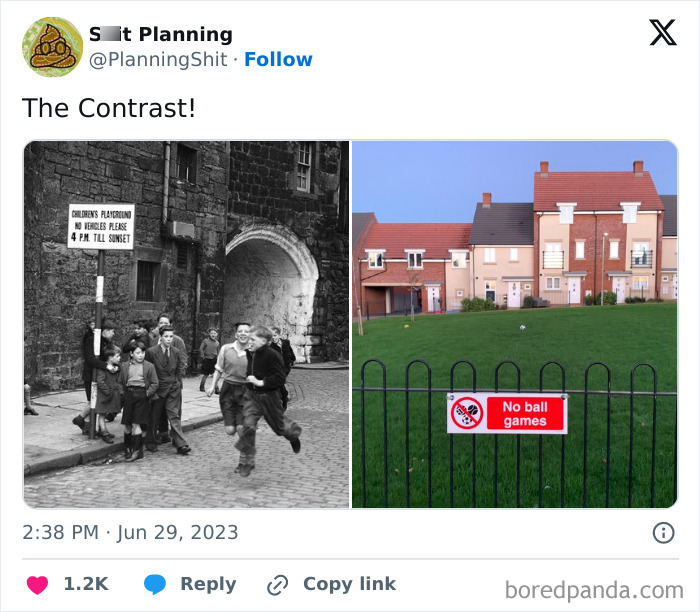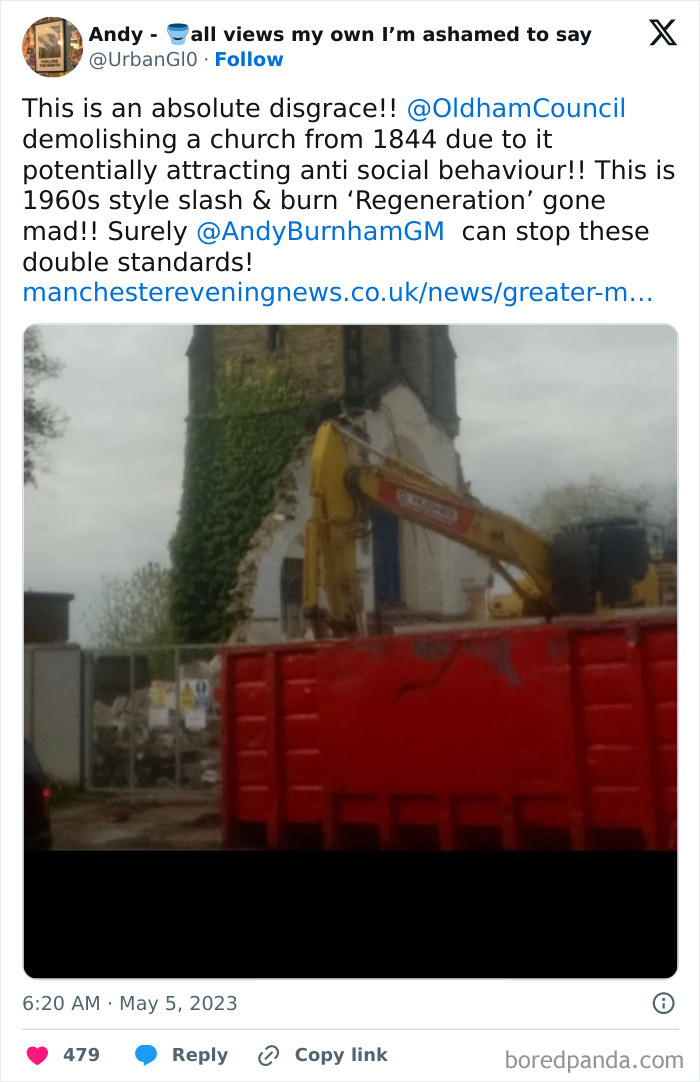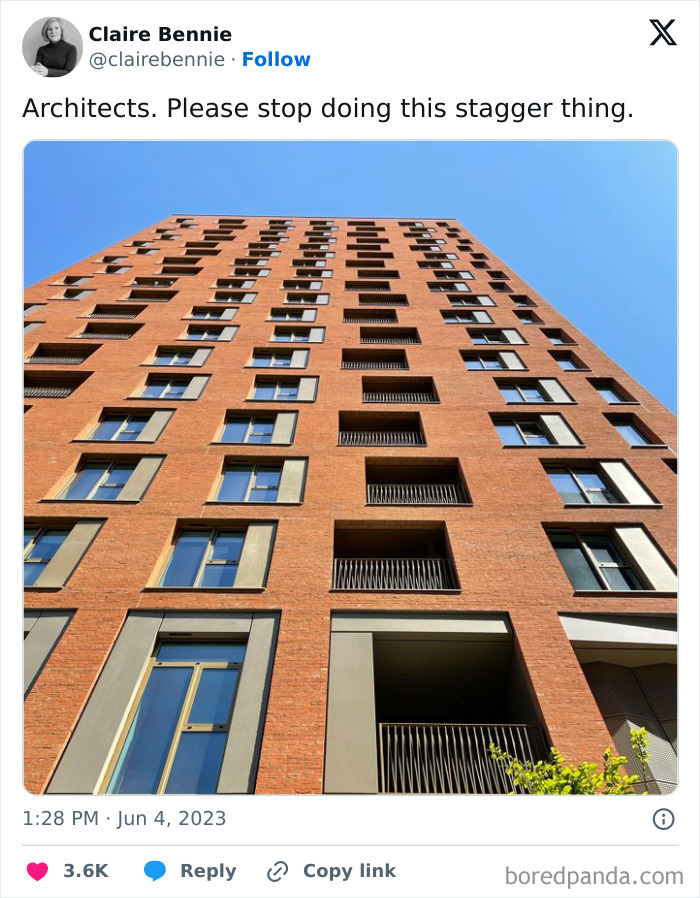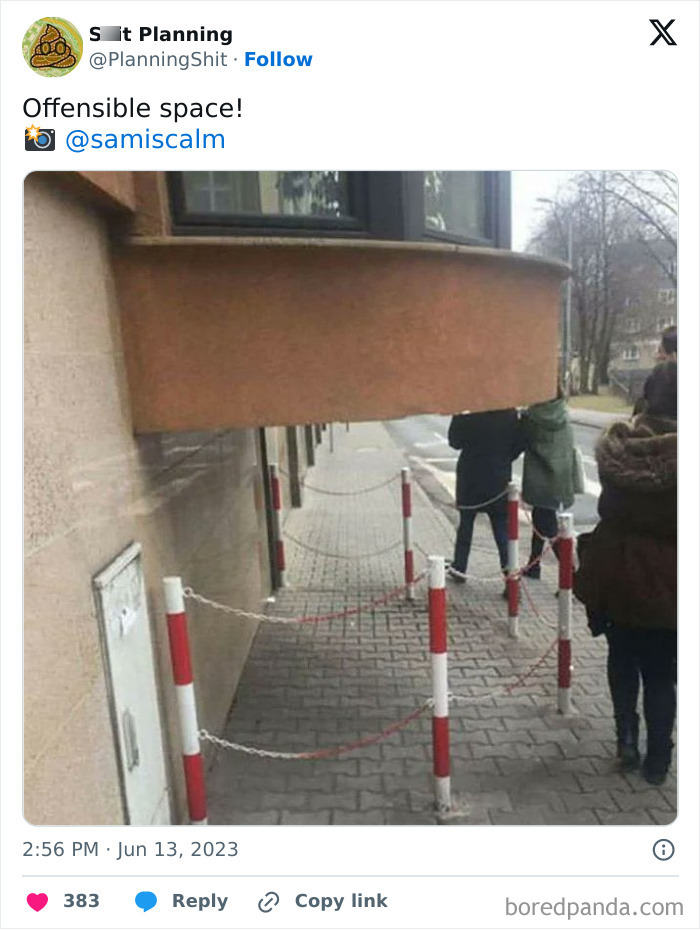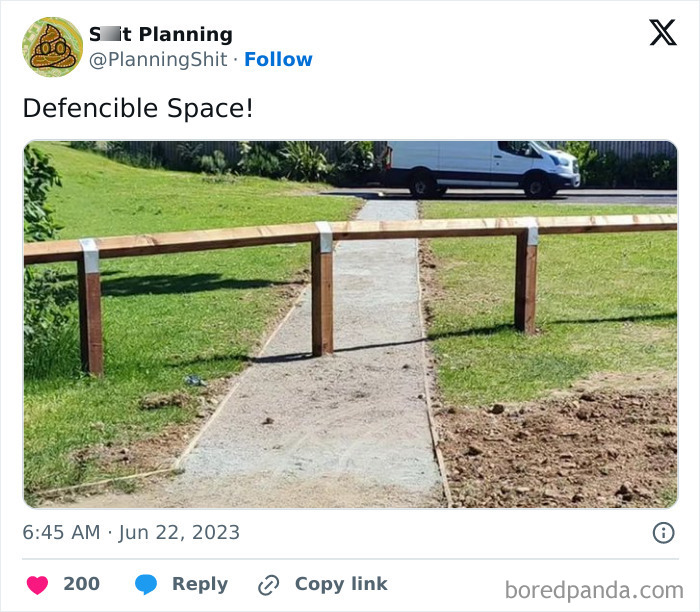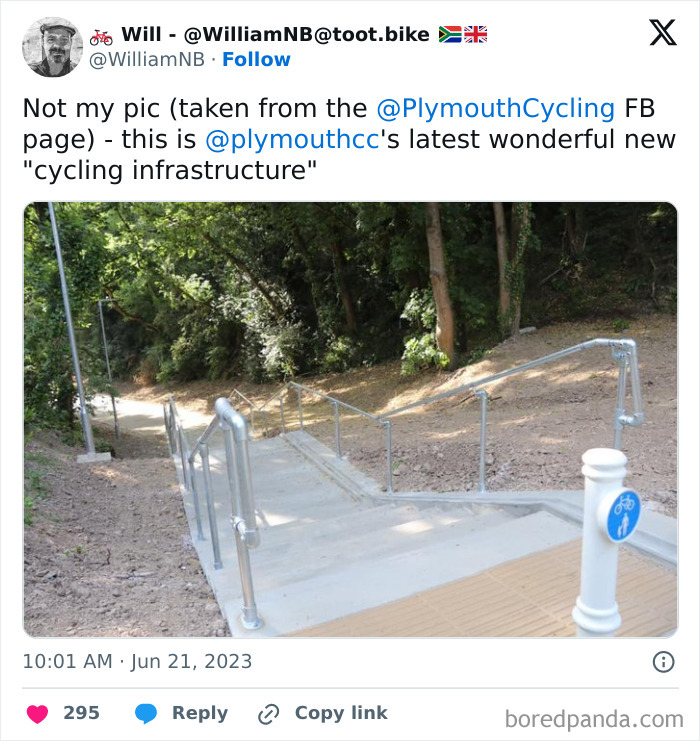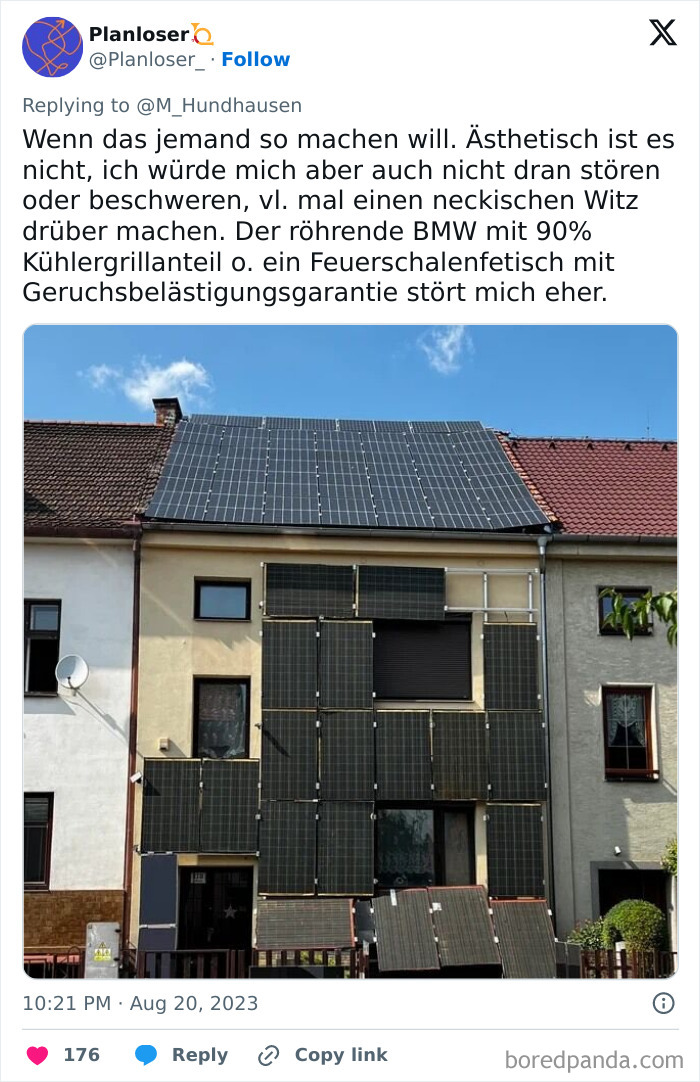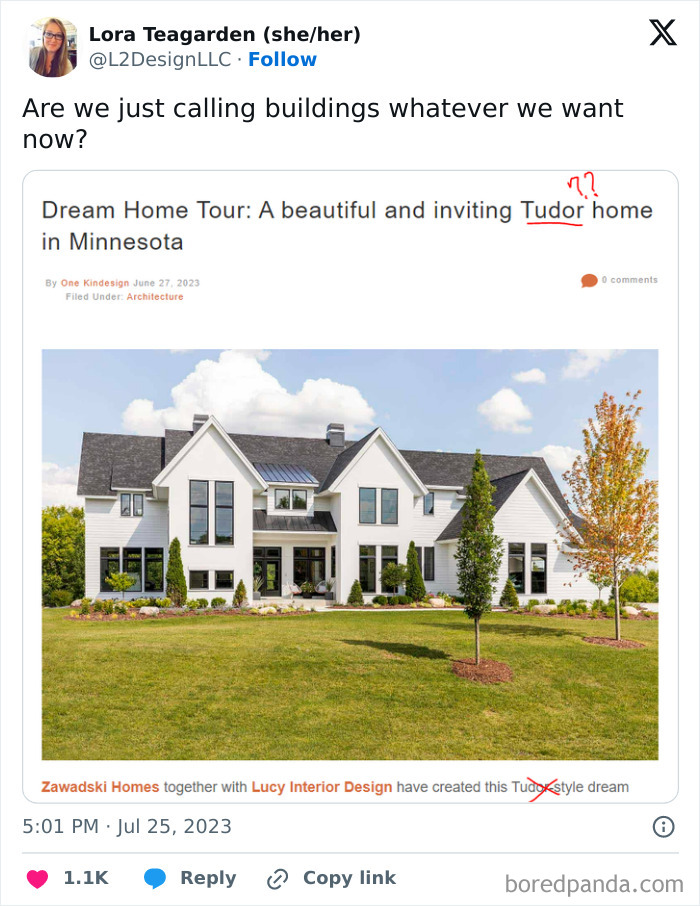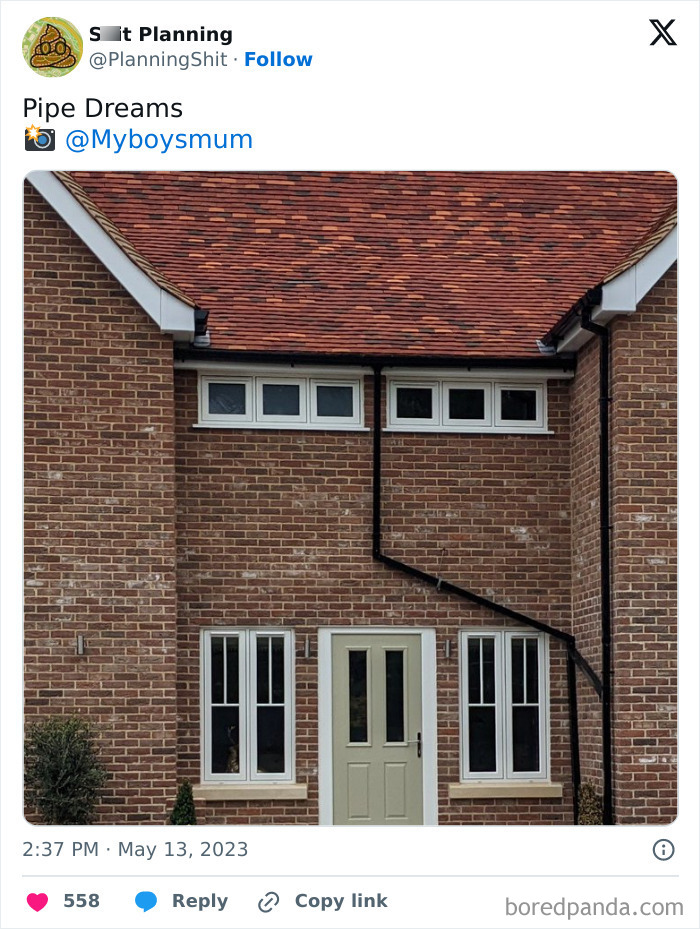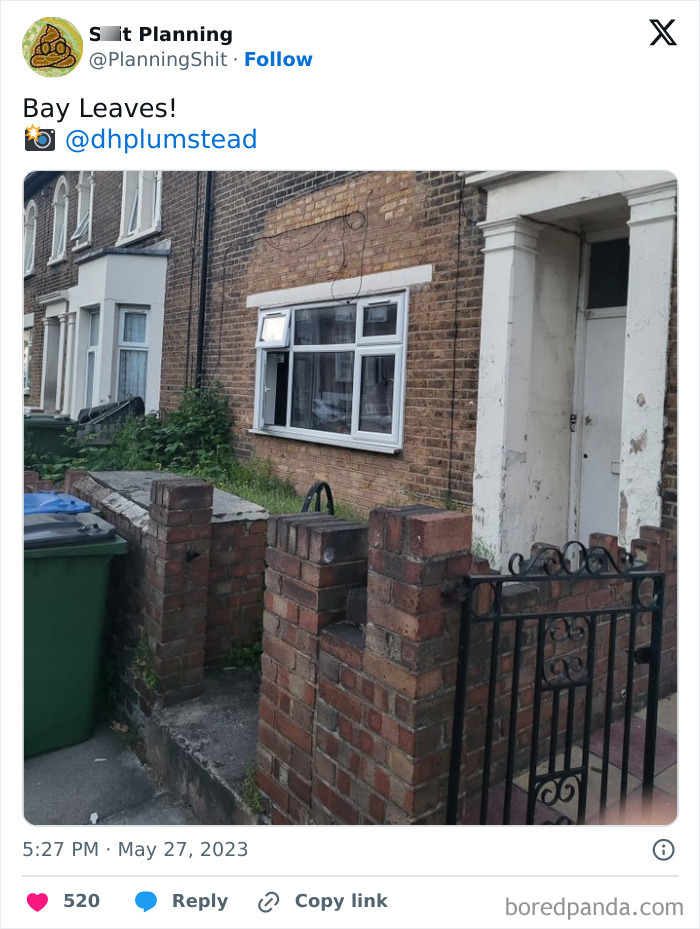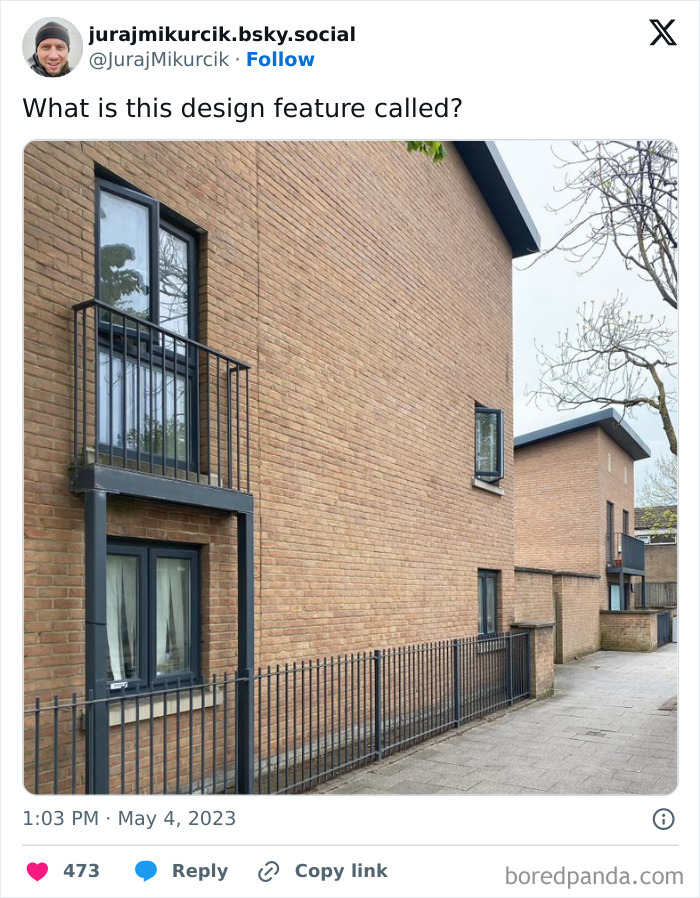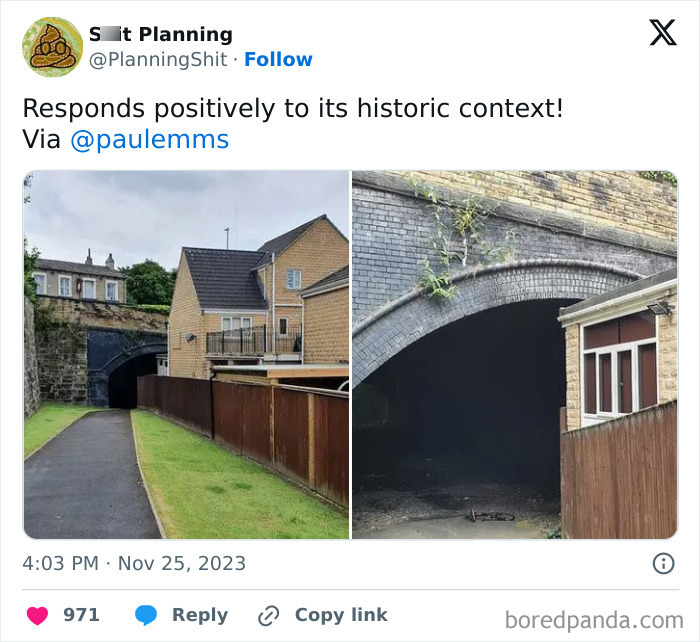The ‘Bad Planning’ account on X (formerly Twitter) calls out incompetent and negligent architects, planners, surveyors, and engineers who made egregious and long-lasting mistakes. We’ve collected some of the top photos of design eyesores to show you how a failure to plan affects the entire project and everyone living near there. Scroll down to see what that looks like. Bored Panda wanted to learn more about what poor city planning looks like, so we reached out to Sweden-based urban planner and designer Luka Kodikaitė. She was kind enough to shed some light on the topic and shared her perspective on the negative impact of car-centric cities. Read on for our full interview with her. “With the rise of the automobile, cities experienced a shift towards environments heavily reliant on cars for daily commuting, resulting in longer distances, wider roads, and increased parking space at the expense of green areas,” the Sweden-based urban planner explained to Bored Panda. “One infamous case that altered urban planning history is the clash between Jane Jacobs, a grassroots activist, and Robert Moses, a New York City urban planner, regarding the proposed construction of the Lower Manhattan Expressway. Jacobs argued against carving up inner-city communities for the sake of expressways, emphasizing the detrimental impact on neighborhoods and community life,” she shared. These car-centric cities can have lots of negative consequences for the people living there, from increased air pollution and traffic congestion to ugly environments and reduced walkability. “Another detrimental by-product of car-oriented development is the urban sprawl, leading to low-density suburbs lacking essential amenities and perpetuating car dependency while discouraging walkability,” Kodikaitė told Bored Panda. “Unfortunately, in our current economic system, funding decides the quality of the projects. However, there are still ways that planners and architects can influence the outcomes within those frames,” the urban planner told Bored Panda. “One pitfall to avoid is the tendency to adopt a ‘one-plan-fits-all’ mentality. The same concept applied in one country or community will probably function differently when applied in a different context. An effective approach is to actively involve the community and stakeholders in the planning process. By listening to the people who will inhabit the spaces, unexpected insights can emerge, completely turning around the preconceived ideas that were initially based on well-intended, yet stereotyped, assumptions,” Kodikaitė urged planners to approach these decisions from a different perspective and be more involved with the community. “Lastly, in the current day’s spirit of sustainable thinking, planners ought to work with the future in mind. Designing sustainably long term involves creating adaptable spaces and structures capable of evolving alongside changing needs and circumstances. This approach minimizes resource waste and ensures long-term viability.” By 2050, it’s thought that nearly 7 out of 10 people on the planet will live in cities. However, this brings with it some massive challenges. How do you build cities in such a way as to comfortably accommodate a rapidly rising number of residents? Not only that, but you also have to consider how the architectural and design details affect the population. That includes buildings and roads but also extends to everything from lampposts and benches to how you design trash cans. The ‘Bad Planning’ account was created nearly 5 years ago, back in July 2019. In the half a decade since its founding, it’s drawn quite a crowd of architecture fans. At the time of writing, the project had a loyal following of 151.5k X users. The curator of the account calls it a “celebration” of all the low-quality stuff “imposed on our environment.” It’s a way to call out incompetence and thoughtlessness in all the things related to urban planning. It’s also an invitation for all professionals to do better. There are a few potential explanations for why these mistakes end up being greenlit. Probably the most likely explanation for bad designs getting approved is simple carelessness. The people who make the plans and approve them might be overworked, burned out, or demotivated. So they simply do the bare minimum at their jobs, without thinking about the consequences of their actions. Improving the quality of the plans, then, becomes a question of motivating your workforce. You can do that with fair pay, growth opportunities, acknowledging their hard work, etc. However, that requires a lot of effort from the individual in terms of research and editing. On top of that, it means that they need to be in an environment where they have lots of support from their colleagues. Everyone makes mistakes, sure. But those errors shouldn’t be approved just because they’re the cheapest or easiest options. Before you finalize any plans or designs, it’s a good idea to run them by your colleagues, professors, or even your family and friends. They can give you some honest feedback. But you have to be open to taking criticism. It’s a skill that can get you far in life. They might notice that you’ve made an unintentionally silly design decision somewhere, just like they might spot that you’ve misspelled the title on the cover page of your essay. Having people act like your personal focus group is invaluable. Follow Bored Panda on Google News! Follow us on Flipboard.com/@boredpanda! Please use high-res photos without watermarks Ooops! Your image is too large, maximum file size is 8 MB.
